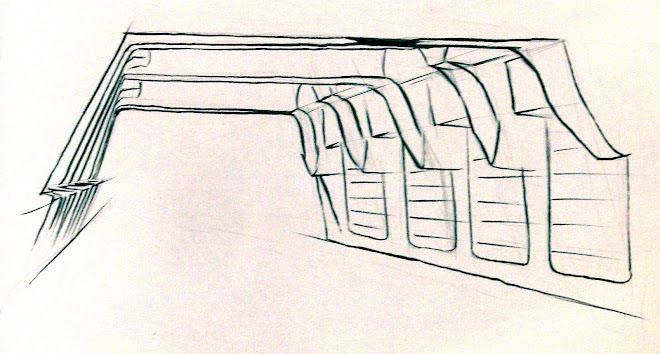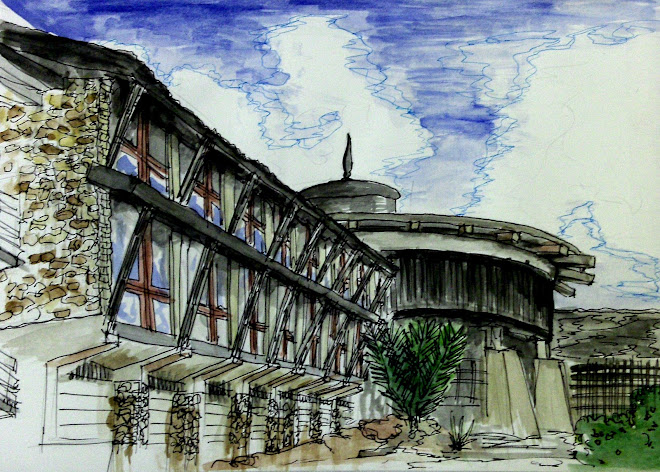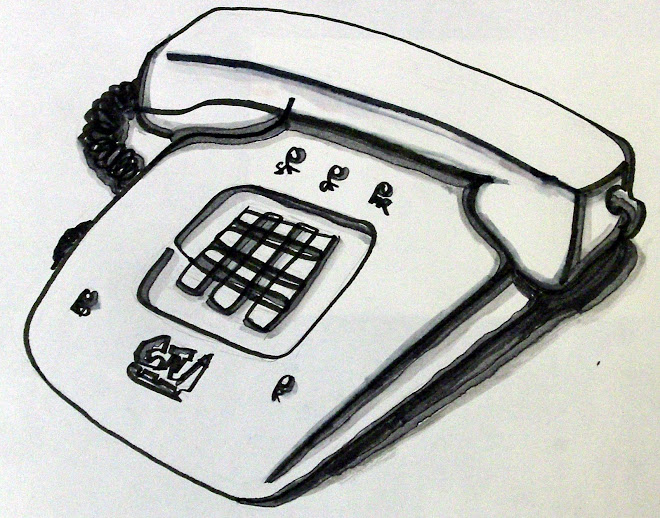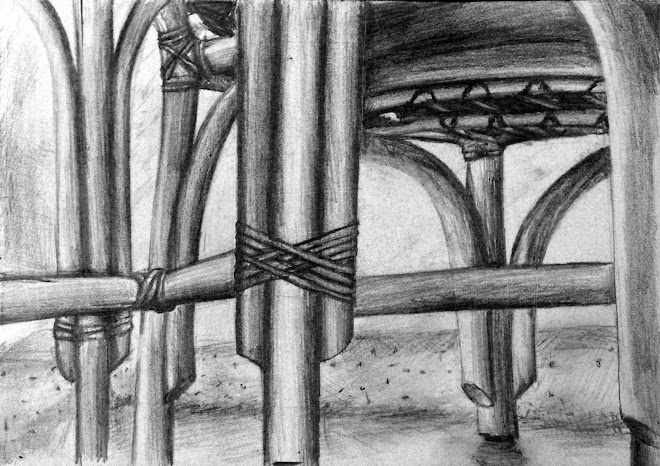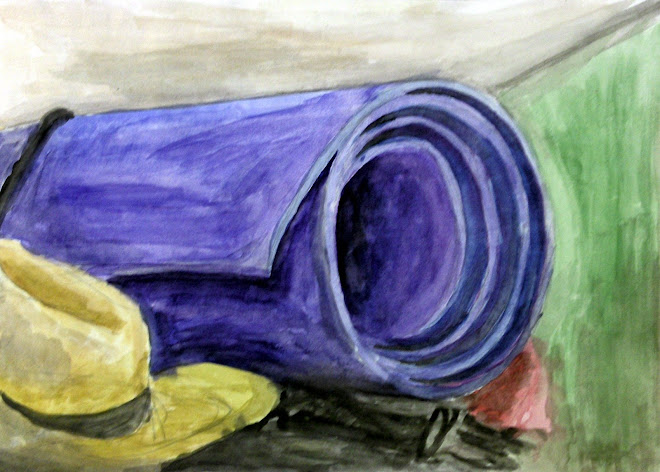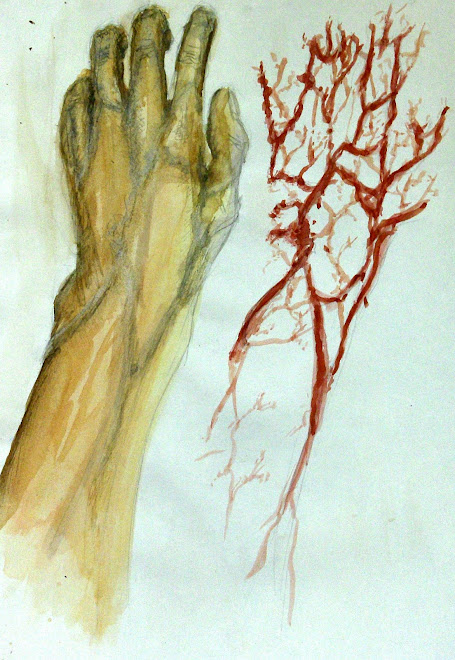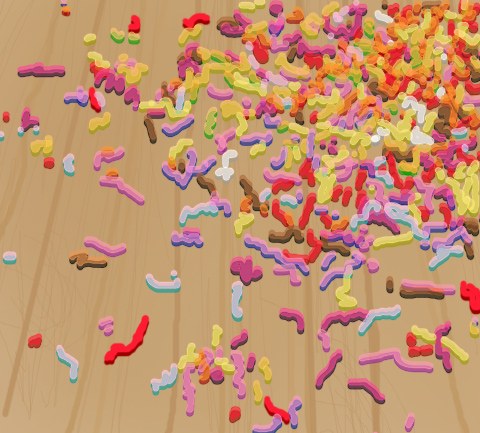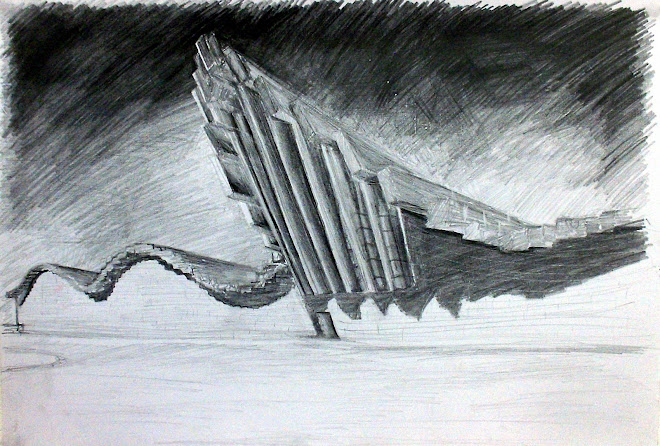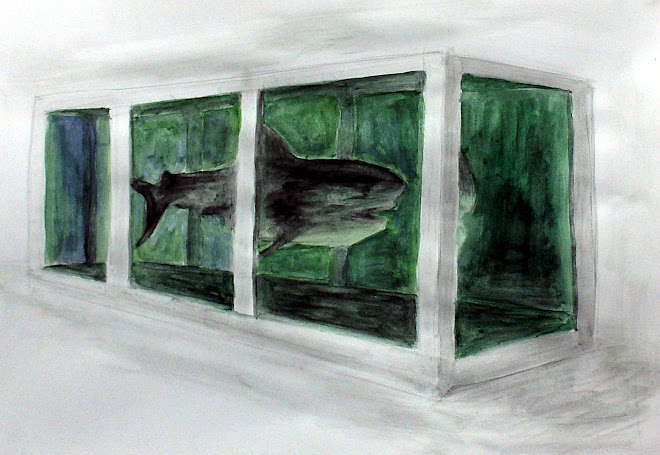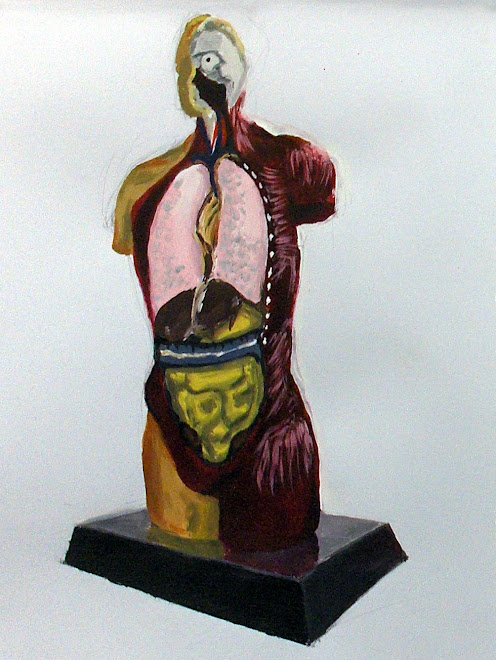


Here is the final mdf construction. After constructing most of this I realised I had used a similar design to Calatrava in his winery; after seeing a side view of the building I realised that all of the protruding cuboids are straight lines, lines which rotate as they are repeated along the front of the building. This is almost exactly what I have done, I have taken a line of fixed length and rotated slightly in each profile. Giving the effect of a laterally curved surface.
I am very pleased with the way this has turned out. I avoided major complications by avoiding the ‘central spine’ construction and opting for the more elegant ‘acrylic support’ option. These are small plexiglass clips that fit onto the bottom part of the pieces (my aim was, after all, to keep the focus of the piece on the trapezoidal cross-sections). I think I have taken elements from Calatrava’s winery and integrated them successfully into a flowing form. I think Thomas Heatherwick’s beach café and the way he had used ‘slices’ to provide the basis for a curved form also influenced me. On reflection, my ideas have developed a long way from the earlier studies and experimentation; consequently I have covered quite a broad range of media and looked at about eight artists. I also feel this diversity has increased my awareness of sculptural forms has broadened my knowledge.
I am very pleased with the way this has turned out. I avoided major complications by avoiding the ‘central spine’ construction and opting for the more elegant ‘acrylic support’ option. These are small plexiglass clips that fit onto the bottom part of the pieces (my aim was, after all, to keep the focus of the piece on the trapezoidal cross-sections). I think I have taken elements from Calatrava’s winery and integrated them successfully into a flowing form. I think Thomas Heatherwick’s beach café and the way he had used ‘slices’ to provide the basis for a curved form also influenced me. On reflection, my ideas have developed a long way from the earlier studies and experimentation; consequently I have covered quite a broad range of media and looked at about eight artists. I also feel this diversity has increased my awareness of sculptural forms has broadened my knowledge.


















